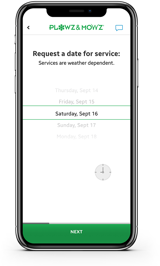To Water Your Lawn, Or Not to Water Your Lawn. That is the question.
We all work hard to ensure our properties are attractive. We spend precious time and money making our yards—which would likely be fine without our help—perfect. So, about midsummer, when temperatures are high and rain is scarce, it can be a kick in the gut to watch the lush green grass seemingly thin and turn brown. During a long period with no rain, the temptation to pull out the hose and sprinkler may be more than you can withstand. But you need to be strong.
Except for newly planted grass, seeds, or sod, lawns that have had fertilizer applied recently, and some certain types of grasses, most lawns are perfectly happy to go dormant (meaning, turn brown and relax). It’s a survival mode that reduces the need for moisture and, according to some experts, it can strengthen the roots. Most lawns can go up to six weeks without water and still come back strong. For newly sown seeds and new sod, watering heavier a few times is better than watering light often. This encourages deeper root growth.
The worst thing you can do is water inconsistently. If you’re going to water, you’ll keep on watering. Remember that dormant grass has prepared for low-water situations. You’ll confuse it—and weaken the roots—if you allow the grass to continually roll from normal to dormant to normal repeatedly.
So, clearly, we aren’t fans of watering lawns, even if it fails the screwdriver test (that’s the one where you take a long screwdriver and push it into the ground; if it goes in easily, the ground has moisture but if it’s hard as a rock it needs “rain”). We also know that overwatering can do a lot of harm to lawns, too, including reducing its stress tolerance for things Mother Nature tosses its way.
So, if you still think our recommendation to not water is off the wall, well, we have some suggestions to ensure your watering does little-to-no harm (and we will withhold our lecture on water conservation).
If You’re Going to Water Anyways
First, water your lawn about twice a week and at natural times (natural times are for the grass, not you). That means the optimal time for watering is when dew normally condenses on the ground, like 4 a.m. to about 8 a.m. If you would rather stay up late and get the watering done, the second recommended time frame is from around 8 p.m. through midnight. No high-noon grass watering.
Next, if you’re going to water your lawn, really water it. You want to soak in about 1 to 1½ inches of moisture. The only way to know how much water you’re sprinkling is to place several containers around an area on the grass and turn on the sprinklers for an hour or two. Then measure how much water is in each container. If you watered for an hour and got an inch of water, then you know it will take an hour on each section to ensure proper watering. Another caveat here: Do this measuring at the time you are normally going to water. Especially with public water, water pressure can vary with the time of day, depending upon usage.
While you don’t want to overwater your lawn, it is healthier for the grass to receive a good soaking a couple of times a week rather than a light one every day. And, certainly, if your municipality says don’t water due to low water levels, don’t water! Your grass will thank you for it (really).
Posted on June 29, 2021
Order landscaping services for your home online, anytime!
Get a Free Online Quote Now
Leave the yard work to the pros this year, you can browse our services and schedule an appoinment online, anytime !

























